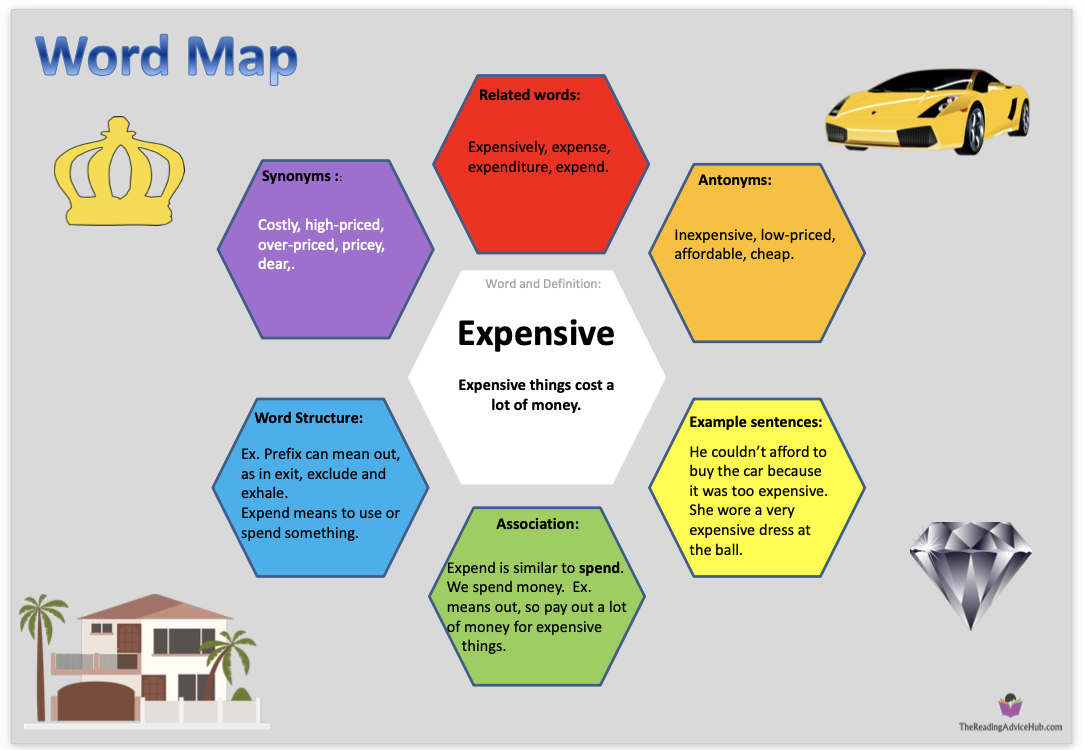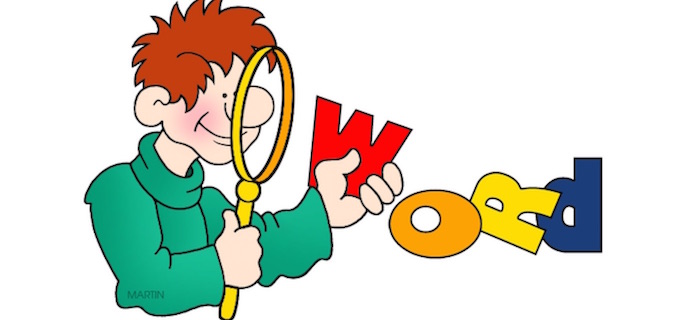Vocab and Context Clues Across the Curriculum
By Kathleen Palmieri
 Today’s educational world is increasingly more complex, and the skill of understanding and using vocabulary effectively is essential for success across all subject areas. Vocabulary is not simply an enhancement of our communication skills – it also plays a significant role in reading comprehension, critical thinking, and overall learning.
Today’s educational world is increasingly more complex, and the skill of understanding and using vocabulary effectively is essential for success across all subject areas. Vocabulary is not simply an enhancement of our communication skills – it also plays a significant role in reading comprehension, critical thinking, and overall learning.
I’ve been thinking about the significance of vocabulary and the use of context clues across all the core subject areas. After researching, discussing, and working with my own students, I’d like to share my findings.
The role of vocabulary in learning
There are actually three different roles vocabulary plays in learning. The first is “Foundational Knowledge” which is pretty much the substructure or building blocks of knowledge. In subjects like science, mathematics, social studies, language arts and literature, specific terms have unique meanings that are crucial for grasping concepts. Examples of this are terms like “biochemistry” for science and “democracy” for social studies. Math is a subject that has many terms important for conceptual understanding such as “inverse” or even as simple a word as “quarter.”
Next is “Cognitive Development” which is vocabulary that enhances cognitive skills, allowing students to analyze, synthesize, and evaluate information. This plays a crucial role in higher-order thinking tasks, where a more nuanced understanding of vocabulary can affect comprehension.
Finally, “Academic Success” reflects what research shows is a very strong link between vocabulary knowledge and academic performance. It has long been known that students who are avid readers build a richer and more extensive vocabulary. This leads to greater success in reading and writing assessments, and becomes a key element for their understanding across subject areas.
Putting context clues to work
An important tool for comprehension is context clues. When students come across an unfamiliar word, the words that surround it in a sentence often provide “clues” to what makes the most sense and how the unfamiliar word may be defined. Using context clues helps to improve not only reading fluency but also reading confidence. I’ve observed that my students are more willing to take a chance in reading if they are confident they can decipher an unknown word or solve a word problem by closely looking at what is around that particular word or term.
It is important to define the word “context” to help students understand: In word study, Context is a noun that means the parts of a statement that immediately precede or follow a specific section of the statement and help explain that section. The context of a specific text clarifies the meaning of that text (dictionary.com). Teaching this skill not only helps students to tackle complex texts, but helps them to be academically successful. This skill is a crucial part of our academic toolbox for lifelong learning.
I teach fifth graders in several content areas. A thought about context clues is that we don’t always consider that they can used across subject areas. In my math class, I ask my students to slow down when it comes to word problems to notice what they are being asked and to identify the important “key” words or numbers to help solve the problem.
Tools that work for me
Vocabulary instruction is important across subject areas and should be part of direct instruction. Making use of new words in lessons will provide students with opportunities to apply them in practical ways.

Example of a Word Map (Source)
I use vocabulary mapping in my classroom to have students consider the word in many ways. This includes definition, synonym, antonym, use in a sentence, and finding a picture to give a visual representation. In science, terms such as a “claim,” “evidence,” or “property” are important to understand as they have multiple meanings in other areas in life.
Collaboration and conversation are ultimately key elements in helping students engage in authentic vocabulary development. Environments that support students to share thoughts, ideas, and contextual interpretations authentically help them ingrain their understanding. Many times peer-to-peer learning seems to be the magic in my classroom.
Resources
I have focused on making vocabulary and context clues essential components in all subject areas. Below are links to academic studies and articles that I have read that have helped deepen my understanding.
► Effective Vocabulary Instruction Fosters Knowing Words, Using Words, and Understanding How Words Work (ERIC, pdf)
► The Importance of Vocabulary Development (Read Naturally)
► The Components of Effective Vocabulary Instruction and Teaching Word Meaning as Concepts (AdLit: All About Adolescent Literacy)
►The Educator’s Science of Reading Toolbox: Explicit Vocabulary Instruction to Build Equitable Access for All Learners.(National Center on Improving Literacy)
For more vocabulary teaching ideas, see
All the Vocabulary Help You’re Likely to Need
Kathleen Palmieri is a National Board Certified Teacher and NBCT Professional Learning facilitator. She is a fifth grade educator in upstate New York who reviews and writes regularly for MiddleWeb. With a passion for literacy and learning in the classroom, she participates in various writing workshops, curriculum writing endeavors, and math presentations. As a lifelong learner, she is an avid reader and researcher of educational practices and techniques. Collaborating with colleagues and globally on X- Twitter https://twitter.com/Kathie_Palmieri and expanding her education adventures at www.kathleenpalmieri.com are her ongoing practices.





























